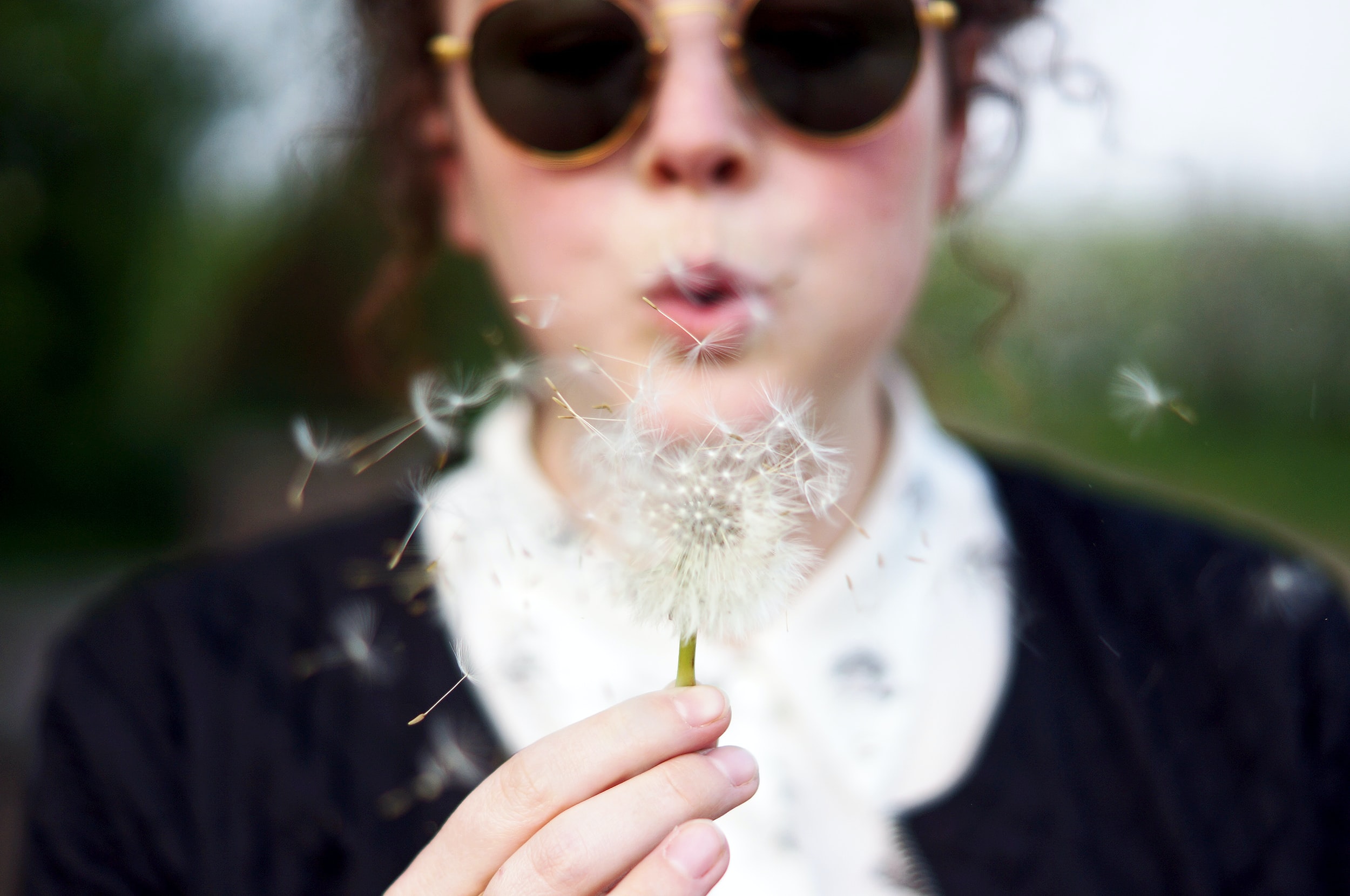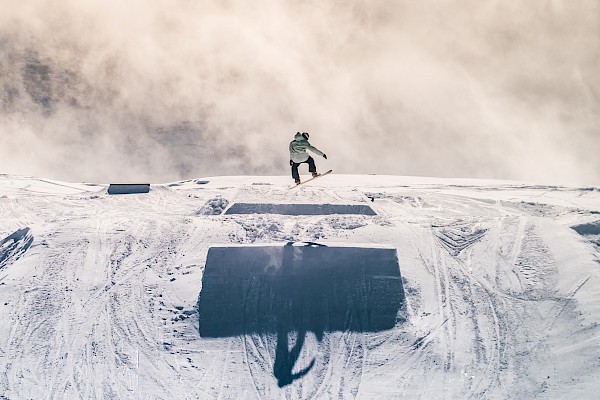Breathing – coming up for air
Breathing techniques have existed for almost 2000 years. And there is a good reason for this. If you breathe correctly, you can reduce stress, keep calm during your daily life and boost the quality of your sleep.
If you have never got to grips with breathing before, or only on occasion, then it is high time to start trying out different breathing techniques now!
Learning breathing techniques and reducing stress
Who does not know the need to take deep breaths in stressful situations? This is a saying that hasn’t just been plucked out of the air. In recent years, various studies have demonstrated a causal link between breathing techniques and stress reduction. For example, it is verifiably possible to calm yourself by breathing slowly and consciously. Studies also show that using breathing techniques can significantly improve sleep quality. Current research has also discovered that using breathing techniques, such as slowing the breath, or breathing slowly and deeply, can reduce stage fright, lower high blood pressure, alleviate pain and lessen feelings of fear. We think this is reason enough to engage with the subject more intensively!
Breathing is an autonomous function. So long as we are well and healthy, we do not need to worry about breathing in our daily lives. We breathe in, breathe out, breathe in and breathe out again, over and over, without being consciously aware of it, yet our respiratory rhythm regulates our autonomous nervous system day in, day out, as reliably as a Swiss watch. Maybe that is why breathing is frequently somewhat overlooked. But because breathing is closely connected to our emotional and mental state, we should definitely pay closer attention to it, and learn to take conscious advantage of how breathing affects our bodies and minds.
How do you breathe in stressful situations?
Stressful moments of tension, insecurity and fear leave us holding our breath, or breathing solely with a short, rapid respiratory rate via the thorax. This rapid, flat breathing further activates the body’s stress reaction, putting our entire system into a state of alert. If, by contrast, we are calm and relaxed, feel safe and secure, we breathe deep into the abdomen and our respiratory rate is long and slow.
As we barely think about breath in our daily lives, we frequently fall back on anything possible in stressful situations. While some try to compose themselves by eating their favourite chocolate, others drink anti-stress tea or smoke a cigarette. But conscious breathing is the best anti-stress tool, because it is available at any time, works on its own and is completely free!
Instead of consuming improbable quantities of chocolate, smoking like a chimney or drinking anti-stress tea until you feel sick, we should rather pause for a moment in stressful situations and focus our attention on breathing.
«Breathe and let be.»
(Jon Kabat-Zinn)
In this article, we would like to provide you with simple breathing techniques that you can use for greater calm and tranquillity both in your daily life and in stressful situations. You can start to experiment right now!
Breathing technique 1: breathe deep into your abdomen
Conscious, deep abdominal breathing is helpful when you need to relax for a short period, or want to collect yourself. It is a simple breathing technique that can be used anywhere and that you can deploy at home, at work, at school or even on the tram. Depending on where you are right now, you can do it lying on your back, or sitting with your back straight.
- Place your hands on your abdomen with the fingertips touching each other lightly.
- Breathe in and out as evenly as you can, without effort.
- Let the air flow first into your abdomen and then into your chest.
- Feel how your abdomen swells lightly when you breathe in and how your fingers move away from each other.
- Notice how your abdomen moves detectably inwards, towards your spine, as you breathe out.
- Breathe out completely and only breathe in again when you feel the need. This could be as long as a few seconds.
- Make sure that you breathe in through your nose.
- Repeat the conscious deep abdominal breathing until you notice that your body is feeling calm and relaxed.
This breathing technique increases the amount of air you breathe in. In turn, this supplies your body with more oxygen and helps it to relax. Feeling a bit dizzy at first is no reason to worry. This reaction is the result of an increased oxygen supply and you should quickly return to normal.
Breathing technique 2: “extended exhaling”
This breathing technique can help you to emerge from a stress reaction more quickly. You should familiarise yourself with the technique in advance so that it can help you in a stressful situation. Regular practice, ideally every day, is important, as then you can simply use the technique for an acute stress reaction. The good thing is that you can unobtrusively use this breathing technique anywhere at any time. This means that regular practice should not be too difficult.
Assume a straight but relaxed position. This can be sitting, standing or lying down.
- Bring your attention to your breathing and monitor the next 5 to 10 normal breaths.
- Feel how your breath flows into your body and out again.
- Now deepen your breathing a little and exhale more slowly as you do.
- Breathe in for 3 beats (count to 3 in your head) and then breathe out for about twice as long (6 beats, so count to 6 in your head).
- Repeat this sequence for the next 10 to 12 breaths.
- Then return to your normal respiratory rhythm.
- Try to feel and sense the relaxation and calm in your body.
Mind Body Medicine, a service of the Institute for Complementary and Integrative medicine at Zurich University hospital, has made this free audio guide to the breathing exercise “extended exhaling” available to download. You can follow the guidance for doing the exercise on the train, in the park or at home.
Breathing technique 3: getting closer to your breath
This breathing technique focuses on a specific aspect of your breath. Sit upright or lie down comfortably on your back. Now focus your attention on your nostrils.
- First monitor the flow of your breath.
- Notice how the air streams in and out of your nostrils.
- Become aware that, when you breathe in, you are taking in oxygen to activate your body, while breathing out is accompanied by a sensation of letting go.
- For a moment, remain fully concentrated on alternately breathing in – taking in, and breathing out – letting go.
- If you like, go one step further after a few breaths by attempting to focus on the temperature of each flow of breath. Feel the cool freshness of breathing in and the warmth of breathing out.
- Repeat this exercise at least until you notice that your body is feeling calm and relaxed.
This technique will primarily aid you to create an awareness of the exchange with your environment and to be in the here and now.
Breathing technique 4: 4610 (4711)
The name of this breathing technique represents the length of inhalation and exhalation as well as the number of repetitions. Consequently, 4610 means: breathe in for 4 seconds, breathe out for 6 seconds, 10 repetitions. If you find the number 4711 easier to remember because of the eau de Cologne brand name, then just adapt the exercise.
Sit comfortably but upright or lie down on your back.
- Breathe in for 4 seconds (count to 4 in your head) through the nose.
- Breathe out for 6 seconds (count to 6 in your head), also through the nose.
- Repeat this for 10 breaths.
- Experience how your body feels and observe whether inner peace and relaxation are setting in.
This is a simple breathing technique that you can use anywhere, entirely without drawing attention to yourself.
Breathing technique 5: Ujjayi breath – breathing like Darth Vader
Ujjayi breathing is undoubtedly a term well-known to all yogis, as it is one of the most widespread yoga breathing exercises. In the newer styles of yoga, Ujjayi breath is deployed almost constantly during the yoga poses (asanas). In Ujjayi breathing, you create a breathy noise or even a flowing fricative sound with your mouth closed as you breathe in and out. You make the sound by contracting your glottal muscles; Ujjayi breathing is audible. The breathy noise is loud enough for you to be able to hear it yourself. It is generally not audible to other people in the room.
This breathing technique calms the mind and can increase your vital energy. By making your breath audible, you will automatically receive feedback about the frequency, depth and possible tension of your breathing. The beautiful thing about this breathing technique is that you can deploy it in any situation or circumstance.
If you still can’t quite imagine how Ujjayi breathing works, then you will find a great many videos and guides on YouTube.
Breathing technique 6: Bhramari breathing or “buzzing bees”
Bhramari breathing is frequently translated as buzzing bee breath, because it creates a bee-like sound. Like Ujjayi breathing, this breathing technique also originates in yoga and is one of the Mahakumbhakas, the eight great yoga breathing exercises. The aim of this technique is to find calm through sound; consciously creating an external noise – the buzzing bee sound – means that inner calm becomes more perceptible. Yoga also ascribes other effects to Bhramari breathing, such as cleansing the throat and reducing coughing and hoarseness.
So how does buzzing bee breath work?
For this breathing exercise, you need to sit down comfortably. By breathing in with a snoring sound, you make a sound like a male bee. Breathe in with your mouth closed, and as you do, imagine yourself snoring luxuriously in your sleep.
Conversely, breathing out represents the noise of a female bee. This is the sound that you probably imagine a buzzing bee making. So breathe out with your mouth closed and create a humming noise as you do.
Bhramari breathing often seems strange when you start. However, it is worth engaging with the exercise once. Try it out for yourself in a peaceful moment. During the exercise you can close your eyes if this helps you to better focus on your breathing. As with the other breathing exercises, notice and experience how your body feels following the exercise. Take two or three further breaths to feel your way into the silence and peace.
Other breathing techniques with audio instructions:
- Breath perception – meditations for beginners (5-10 minutes) from Mindfulness Swiss
- Breath perception – longer meditations (10-20 minutes) from Mindfulness Swiss
- Everyday exercises from Mindfulness Swiss
- Exercises with children and for children from Mindfulness Swiss
- Regulating breathing from mobilesport
- Breathing exercises from Lungenliga
References:
Jafari, H., Courtois, I., Van den Bergh, O., Vlaeyen, J. & Van Diest, I. (2017). Pain and respiration: a systematic review. Pain, 158 (6), 995–1006.
Jerath, R., Crawford, M. W., Barnes, V. A. & Harden, K. (2015). Self-regulation of breathing as a primary treatment for anxiety. Applied psychophysiology and biofeedback, 40 (2), 107–115.
Jerath, R. et al. (2006). Physiology of long pranayamic breathing: neural respiratory elements may provide a mechanism that explains how slow deep breathing shifts the autonomic nervous system. Medical Hypotheses. 67 (3), 566-71.
Paulus, M. P. (2013). The breathing conundrum-interoceptive sensitivity and anxiety. Depress Anxiety. 30 (4), 315-20.
Schömbs, S. 5 Atemtechniken für mehr Ruhe und Gelassenheit im Alltag. Blogbeitrag. www.7mind.de
Wells, R., Outhred, T., Heathers, J. A., Quintana, D. S. & Kemp, A. H. (2012). Matter over mind: a randomised-controlled trial of single-session biofeedback training on performance anxiety and heart rate variability in musicians. PloS one, 7 (10), e46597.
 subscribe to newsletter
subscribe to newsletter


